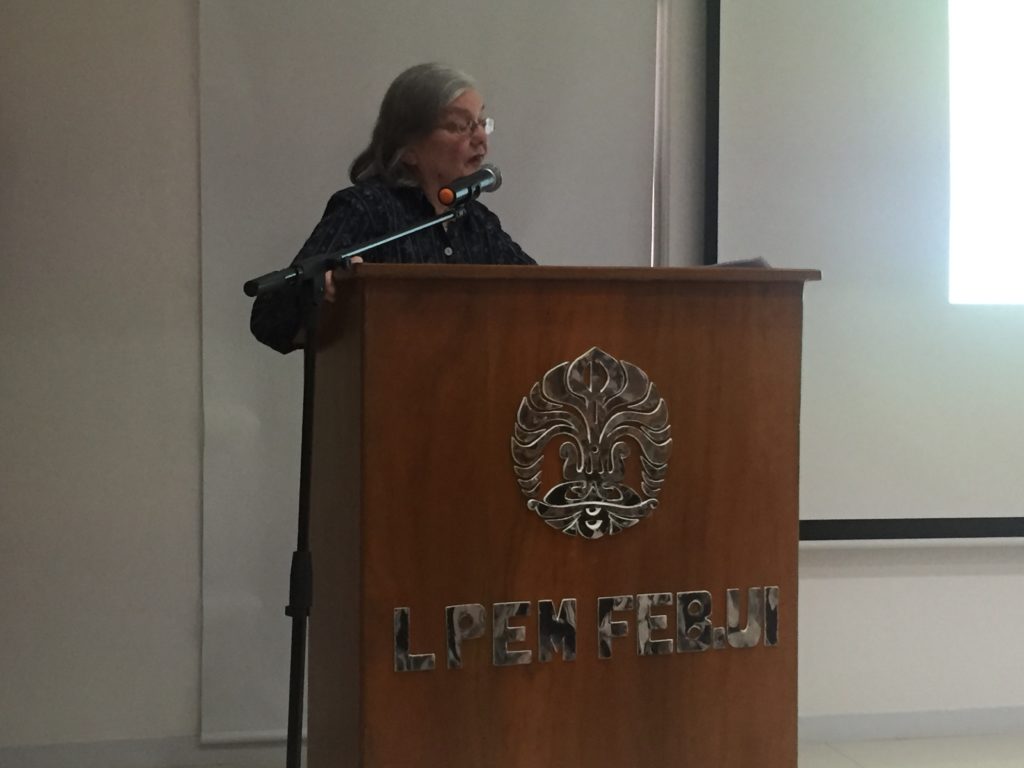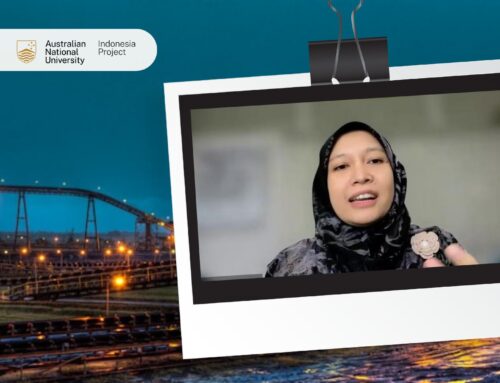Since the financial crisis in the late 1990s, the government of Indonesia has introduced a number of social protection programs to protect the poor and vulnerable. On Tuesday, 14 May 2019 Professor Anne Booth (SOAS, University of London) and Moh. Raden Purnagunawan (TNP2K) presented their article on the matter at LPEM FEB UI. The article is written with Elan Satriawan (TNP2K) and was published in the July 2019 edition of the Bulletin of Indonesian Economic Studies
Professor Booth began by presenting what Indonesia is going to face in the near future, which are growth at around 5%, subdued inflation, and loosen monetary policy. However, she found it concerning that there has been a 43.6% increase in subsidies from 2018 to 2019. Removing these subsidies is an important challenge for the government, but the implementation of other social protection systems will minimize the adverse impacts on the poor.
Despite Indonesia’s relatively stable monetary condition, its performance on several non-monetary indicators are deemed worrying by the government and non-government groups alike. For a middle-income country, Indonesia lags behind other Asian countries such as Sri Lanka, the Philippines, and Vietnam in terms of human development indicators, such as health, sanitation, and education. These factors, along with the growth of inequality suggest the need for social protection policies for the poor and vulnerable.
Food security is one of the persisting problems in Indonesia. The price of rice in Indonesia has increased rapidly since 2010, and the amount of food imports have also increased since 2015. The actual figure of rice produced in Indonesia has been unclear, but official statements are mostly overstated. The high prices and unavailability of sources of nutrients lead to other health problems, namely stunting and wasting.
In relation to poor health conditions, Indonesia has expanded its healthcare services since the Soeharto era with the massive constructions of Puskesmas and Posyandu. However, even after the reformation era, many of these posts lack trained staffs and basic medicine. The distribution and quality of these services are also not evenly spread. In 2018, the Ministry of Health revealed that only 61% of Posyandu in Indonesia still offer services to the public. Although the state budget for healthcare has risen since 2013, it still accounts for less than 1% relative to GDP. A study by Johar et al (2013) also found that most healthcare funding for public and private services benefit the nonpoor.
This mistargeting problem is a common feature that are found in other social protection programs. TNP2K found that 58% of the government’s expenditure for assisting the poor is allocated for LPG, electricity, and fertilizer subsidies. Many of the households that enjoy these benefits do not live under the poverty line. On the other hand, scholarships for poor students (PIP) and conditional cash transfers (PKH) face another targeting problem, in that they do not include enough people. The World Bank argues that the small scale and lack of integration diminish the impact of these interventions.
Concluding the session, Professor Booth emphasized four main points from her presentation, namely the importance of childhood health programs, food availability and distribution, a better coordination and division of tasks between central and local government, and the need for more skilled workers.
For the complete presentation and Q&A session, please refer to the video and materials provided.





